K Bedford restoration project: part 1
 Some wag commented that although it's three years younger than its owner, the truck looks a whole lot better.
Some wag commented that although it's three years younger than its owner, the truck looks a whole lot better.
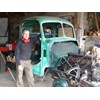
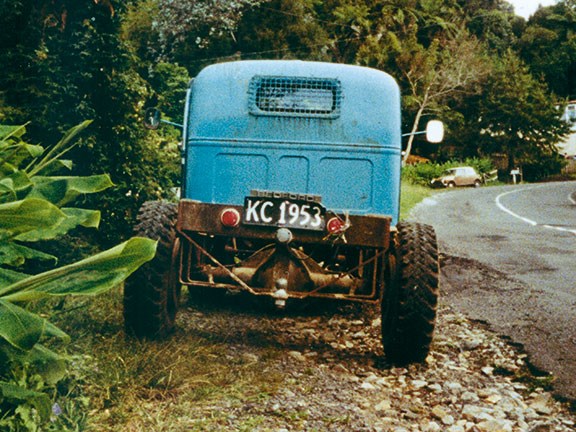 The KC1953 had to be ordered from the post office when that number became available in the early 1980s.
The KC1953 had to be ordered from the post office when that number became available in the early 1980s.

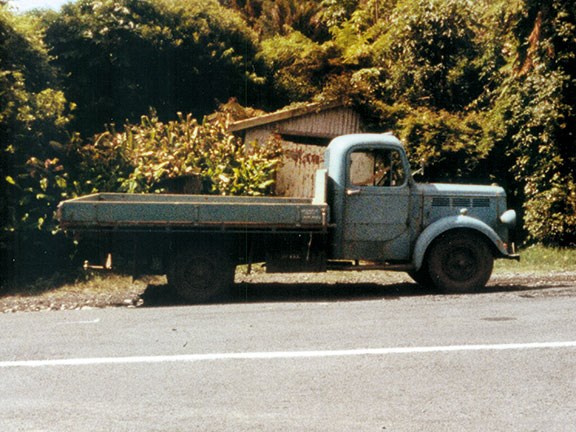 The K as it looked when it was still complete.
The K as it looked when it was still complete.

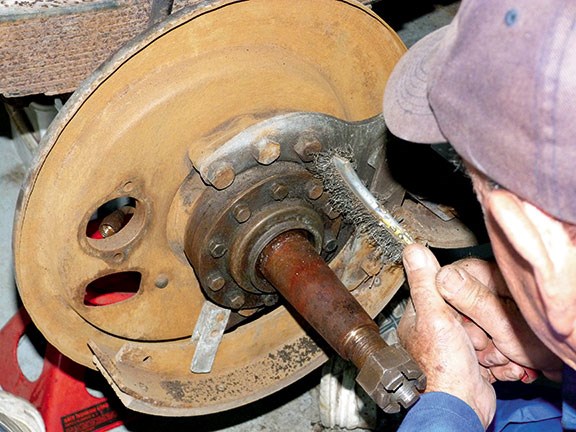 All clean and ready for painting.
All clean and ready for painting.

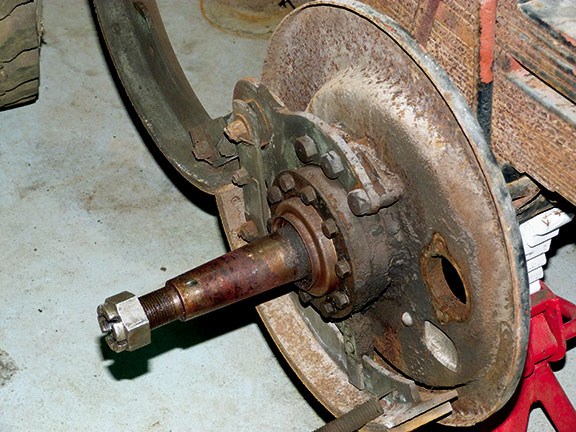 The drums hadn't been off in nearly 30 years and needed a lot of wire brushing.
The drums hadn't been off in nearly 30 years and needed a lot of wire brushing.

 Probably as good as new and ready to fit the drums.
Probably as good as new and ready to fit the drums.
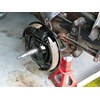
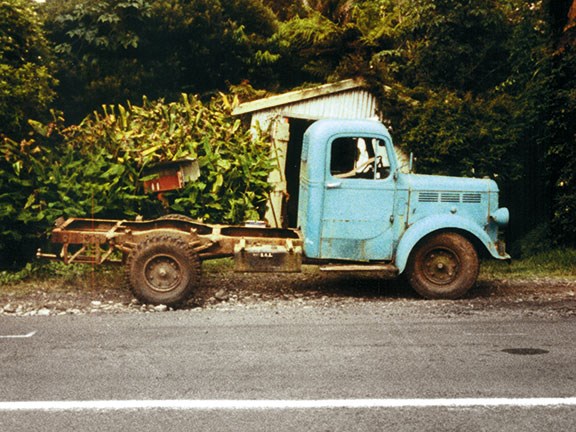 The deck was removed sometime in 1985.
The deck was removed sometime in 1985.


|
|
Some wag commented that although it's three years younger than its owner, the truck looks a whole lot better.
|

|
|
The KC1953 had to be ordered from the post office when that number became available in the early 1980s.
|

|
|
The K as it looked when it was still complete.
|

|
|
All clean and ready for painting.
|

|
|
The drums hadn't been off in nearly 30 years and needed a lot of wire brushing.
|

|
|
Probably as good as new and ready to fit the drums.
|

|
|
The deck was removed sometime in 1985.
|
Join Lyndsay Whittle in his quest to restore an old K Bedford truck. Will he or won’t he get it back on the road? Read on to find out.
Bedfords — you either love 'em or hate 'em. In their day they were often regarded as underpowered and under-braked. They were austere, even by the standards of the day. For instance, the similar-shaped K Series Austin had wind-up windows, while Bedford owners had to wait almost another ten years and two or three models before they could experience such a luxury.
Nevertheless, the New Zealand market was flooded with Bedfords, which were rapidly taken up by large companies and most of the major bus companies. There were so many bedfords working in this country that it's perhaps not too much of an exaggeration to say they helped build New Zealand.
A long time coming
It's so long ago that I can't remember the exact year I put my K Bedford off the road, supposedly for the Christmas holidays so I could have some rust taken out of the cab. As a best guess it must have been around 1984 or 1985.
I had stored some components in my mate George's shed, who put them out on the curb before he moved to Australia in 1987. Among the rubbish placed at the roadside, were my factory-original K Bedford rubber floor mats. Now, in 2014, I've searched both in NZ and overseas for floor mats like those, and have discovered they're as rare as hens' teeth.
Funnily enough, the 'George' incident is merely one of a whole series of potentially-devastating events that could have easily consigned the old K to the scrap heap.
I recall a time about ten years ago when I could no longer justify spending money on storing it, so a very kind friend, Richard Seccombe, allowed me to store the truck at his auto-parts premises. It remained there until he sold the business a year ago, at which time another friend, Dean Southey, offered space in his workshop.
It wasn’t until about a year ago that one final shove made me commit to getting the job done. I had the pleasure of doing an article for Deals on Wheels about a Bedford that's 21 years older than my K. This truck's owner, Murray Firth, has since become a friend and it is he who gave me the final push.
Murray and I have set aside each Wednesday, along with other odd moments, to get the job done and in the last couple of months have got the show on the road, along with the assistance of the previously-mentioned Dean, who is an engineer by trade.
I'm probably sticking my neck out a little when I say I'm hoping to have the truck registered with a COF and on the road by Christmas this year.

A short history lesson
The one-and-a-half-tonne K Bedford came into existence in 1939, along with the three-tonne 'M' and the similarly-shaped but shorter-bonneted five-tonne 'O'. However, the majority of these models came to New Zealand after World War 2, between 1946 and 1953, before being replaced with the more-modern-shaped 'TA' series.
Aside from a few minor visual changes across the K, M, and O range, the only major difference between trucks manufactured in England between 1946 and 1949, and 1950 and 1953 was the introduction of a 12-volt electrical system and a synchromesh gearbox.
The exception to this rule was the K, which came out in limited numbers with 16-inch wheels replacing the former 20-inch variety. Naturally, these trucks were fitted with a higher ration diff to compensate for the smaller rolling-radius of the 16-inch wheels.
The K Bedford
This particular truck was bought new in Methven in the South Island on 9 April, 1953, and was later sold to a fruit shop in Dunedin. On 10 February, 1967, the truck was sold to a resident of Kerikeri, before coming to Northcote in Auckland.
One day early in February 1979, I was making a delivery on Auckland's North Shore and spied the K sitting in someone's driveway. The truck didn't have a 'for sale' sign, but I cold-called the guy and soon became the new owner.
I am not superstitious but have strangely come across many coincidences in the truck's recorded history — one of which is that every time ownership of the vehicle has been transferred, it has taken place in the month of February.
The truck was used mainly for personal use, with things like delivering aggregate when building my house in the early 1980s. It was pulled into business use to deliver a load of paint to Hamilton and then back-loaded to Auckland for one of my customers.
I think my fondness for Bedford's came from the K model that my dad used to borrow from a friend, to do the odd job here and there, and the K model has been a part of my life in one way or another for around sixty years.
Bloody panelbeaters
The Bedford was pulled off the road to have rust removed, with the panelbeater intending to do it over the Christmas break. The weeks turned into months and then into a couple of years, until one day in the early 1990s the man sold his business to one of his employees, who promised faithfully to start work on my truck. Of course, he never did.
Somewhere along the way, the second panelbeater went broke and my K Bedford (by then a separate tangle of parts), had been confiscated by a creditor. Somehow or another I was able to track all the parts down and buy them back.
Amazingly, the only parts I've lost over the past thirty years have been lost in fairly recent times. One such part was a brake component, a spring which was discovered to have gone astray just a couple of weeks ago.
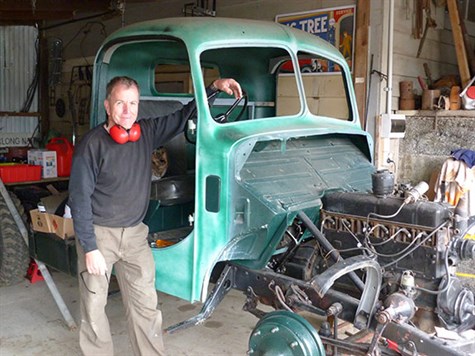
Read the manual
As we walk through this restoration over the next few months, I'll include a 'lessons I've learned' section, so starting off in the spirit of the idea, here is the first bit of advice… Read the manual.
A couple of weeks after disassembling the rear bisector brake cylinders we were at the point of completing the refit and were relying on our aging memories to complete the job.
However, in our haste we forgot to fit a set of compression springs to the units and to our surprise, while we had the front brakes working as good as new, the rear brakes were useless.
Upon consulting the workshop manual we realised our error and set about finding the two springs. However, search as we did, we could only find one. This necessitated a call to our good friends at Horopito Motors in the central North Island, who managed to find the part.
The irony of the whole affair was that we've since found the spring for a bisector cylinder of an early Bedford is the same as the outer valve spring of a 1939 – 1948 Morris Ten, an item of which we had plenty.
We'll look forward to sharing many more mistakes (and wins) along the way of the Old K Bedford's restoration over the coming months.
Follow along with Lyndsay's restoration project in the next issue (#250) of Deals On Wheels magazine. Subscribe here.
Keep up to date in the industry by signing up to Deals on Wheels' free newsletter or liking us on Facebook.



.jpg)



.png)
.png)

